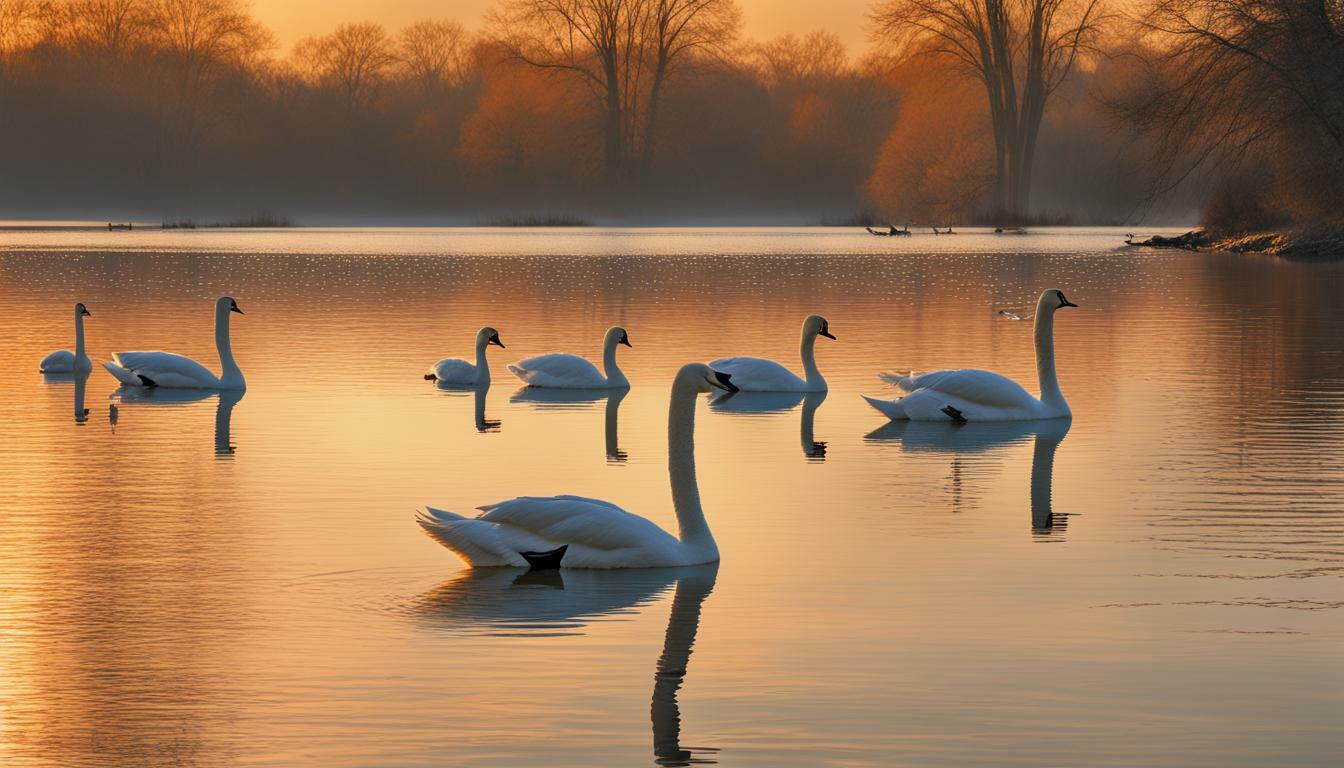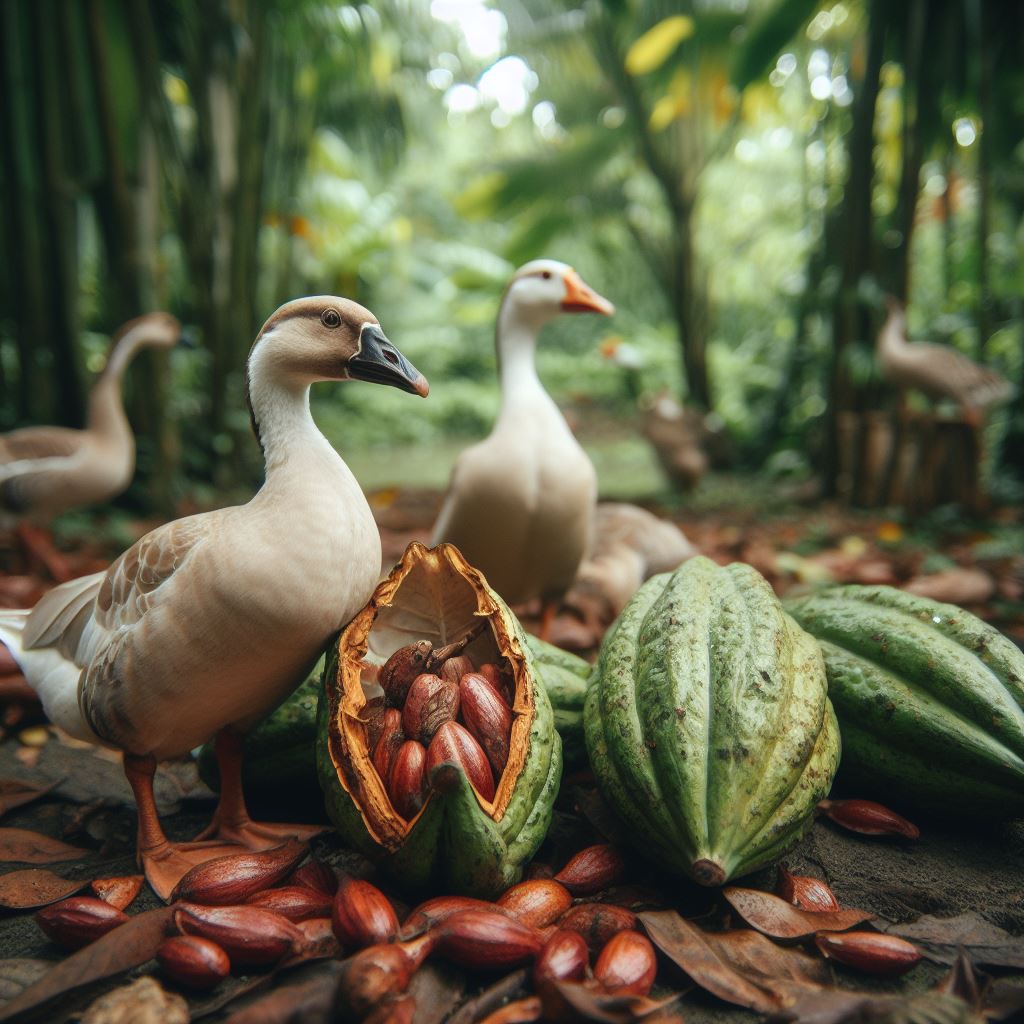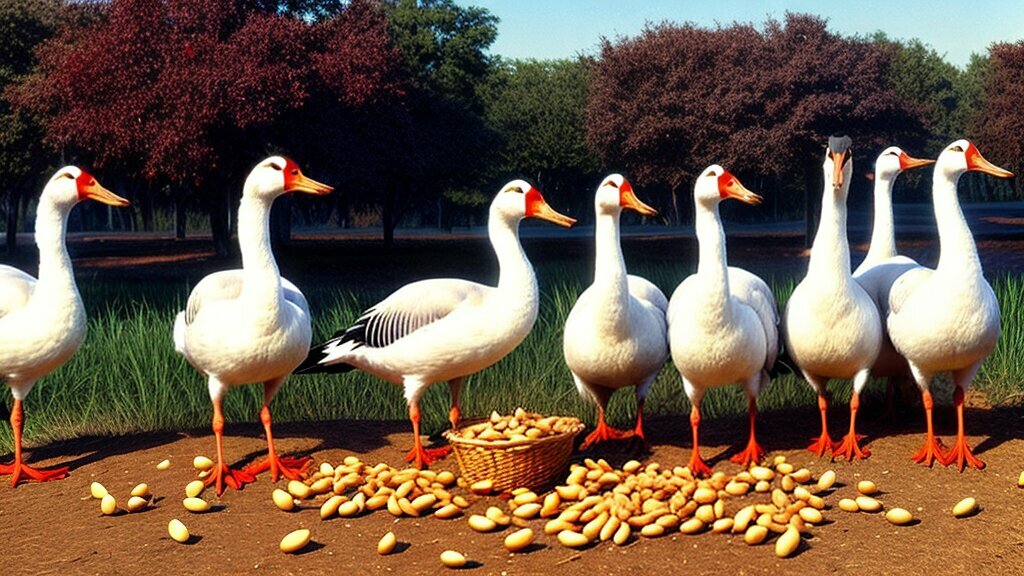Do Swans and Geese Get Along? Discover Here!

Table of content:
Swans and geese are two types of beautiful waterfowl that often share habitats. However, they have a complex relationship and do not always get along peacefully.
Swan and Goose Behavior
Swans are known for their grace and majestic appearance. However, they can be quite aggressive, especially towards other waterfowl like geese.
Geese tend to be more social and live in large flocks. They are wary of predators and perceive swans as threats.
Why Swans and Geese Usually Don’t Get Along
There are a few key reasons why swans and geese generally do not coexist well:
Territoriality
Swans are very territorial, especially during breeding season. They will chase geese and other waterfowl out of areas they claim as their own. Swans do not want competition over resources like food, nesting sites, and mates.
Dominance
Swans establish dominance over geese and will act aggressively towards them. Swans will posture, spread their wings, and charge at geese who get too close. They can also bite, hit, and chase geese relentlessly.
Competition
Swans and geese compete for the same food sources as aquatic plants. Swans are larger and will usually win out over geese when feeding. Swans may also destroy goose nests and eat goose eggs.
Perceived Threat
Geese are instinctively wary of swan aggression and will keep their distance. Geese may scatter whenever swans approach to avoid conflict and possible harm to goslings.
Can Swans and Geese Coexist Peacefully?
While confrontations commonly occur, swans and geese may coexist in close proximity under certain conditions:
Plentiful Resources
If there is ample food, nesting space, and mates available, swans will be less territorial and aggressive. Geese may also feel less threatened by swans when resources are plentiful.
Habituation
In areas where swans and geese frequently encounter each other, the birds may become habituated. Swans may become more tolerant of geese and reduce aggressive behavior.
Sheltered Spaces
Ponds or lakes with sheltered spaces like vegetated banks and secluded inlets allow geese to stay hidden and avoid swan encounters. This reduces confrontation between the species.
Sufficient Space
Large bodies of water that allow adequate social spacing between flocks of geese and pairs of swans will lower competition and aggression.
Winter Months
Territorial and mating behaviors are reduced in winter, so swan aggression towards geese may lessen at this time of year.
Managing Swans and Geese
Here are some tips for managing swans and geese to reduce conflict when they share habitat:
- Provide separate feeding areas for each species. This prevents competition for food.
- Place floating bamboo or wire barriers to divide ponds and allow space between the birds.
- Install mesh fencing around swan nests to protect eggs and young.
- Introduce breed pairs of swans rather than multiple birds to reduce territorial behavior.
- Discourage nesting by reducing suitable nesting vegetation for swans.
- Scare or herd geese away from main swan territories and nests.
- Provide alternative ponds or shelter areas where geese can escape from swans.
- Use humane hazing, dogs, or swan decoys to deter geese from approaching swans.
Maintaining Balance in Shared Habitats
With some planning and resource management, swans and geese may be able to coexist reasonably well. Their interactions highlight the delicate balance that must be maintained between species sharing an ecosystem.
Understanding the factors that cause competition and aggression between these water birds allows us to reduce tensions. With proper habitat design, they can meet their needs while avoiding excessive conflict.
Final Thoughts
Swans and geese are magnificent waterfowl that enrich wetland habitats. However, their behavioral differences and resource requirements mean they will seldom form mixed flocks peacefully. By respecting their space and needs, we can appreciate the beauty of both species and allow them to flourish together.
Welcome. I’m Adreena Shanum, the proud owner of this website, and I am incredibly passionate about animals, especially poultry. I founded adreenapets.com as a labor of love, stemming from my desire to share my knowledge and experiences with poultry enthusiasts worldwide.




